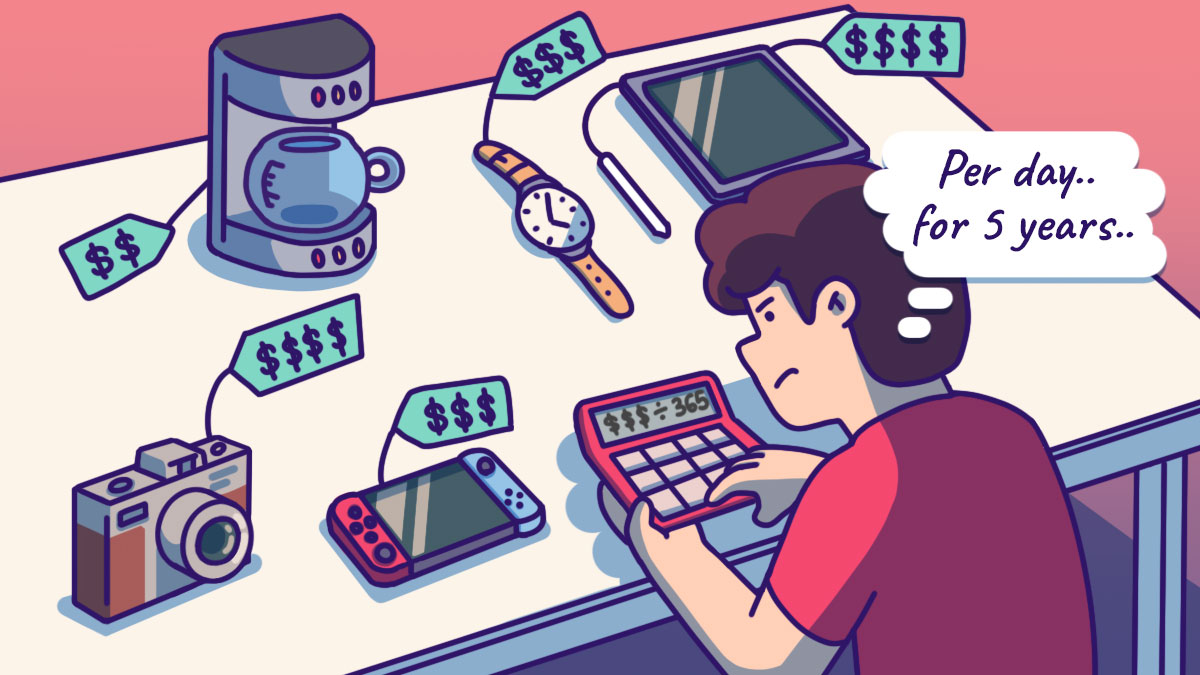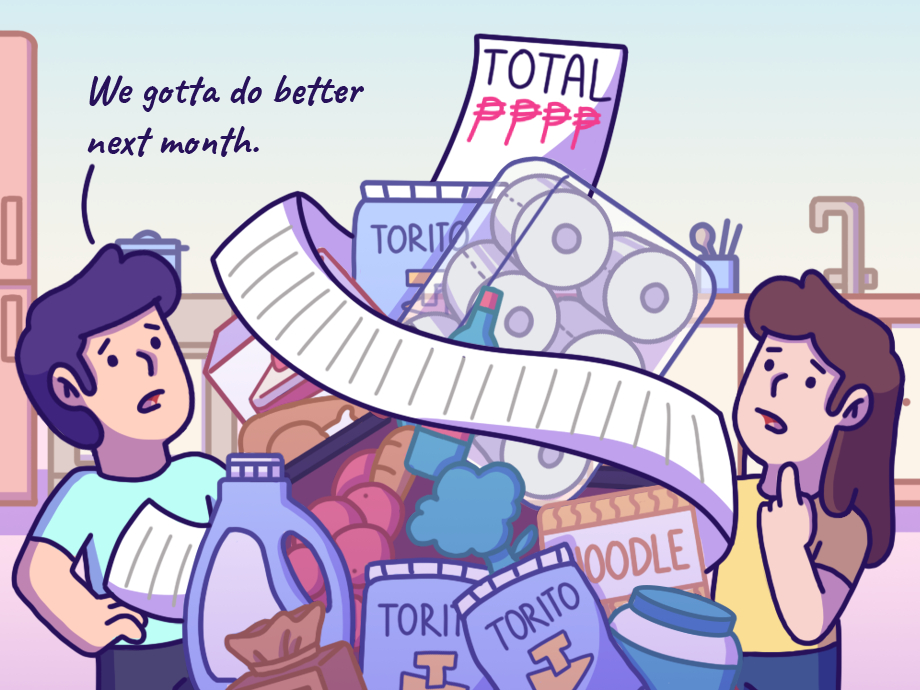Budgeting | Personal Finance | Article
Cost-per-Use: How to Maximise Sale Season and Get More Value From the Money You Spend
by The Simple Sum Team | January 10, 2022 | 6 mins read

Once, all a shopper had was Black Friday and Cyber Monday to get the best deals for their money. Now, we’ve grown accustomed to monthly sales (or doubles sales) on platforms like Lazada and Shopee, where the best deals and discounts are just a click away. These online sales are so frequent and convenient now that you’ll almost certainly never miss a sale again — and you’ll never have to queue for one either!
Frequent discounts on your groceries, new appliances, or even new furniture is good, right?
Not always. Considering how easy it is to click “Add to Cart” — these discounts and deals could be a double-edged sword, leading you down the path of overspending and blowing budgets. Not to mention, it’s easier than ever to end up buying things you don’t actually need.
But what if you’ve been eyeing a big purchase for a while but you’re just hesitating because you’re not sure if it’s worth the money? Say that ₱25,000 vacuum cleaner that sucks real good. Or that business suit that’s going to make you look really suave at work. How would you know if you’ll thank yourself for getting that item during a double sales day, or regret it the moment you click “Pay” at checkout?
Well, the handy concept of “cost-per-use” can be one way to figure out if that item you’re eyeing is worth splurging your hard-earned cash on.
How cost-per-use works
Cost-per-use is, in essence, the amount of money you’d pay for each instance of use for a certain item or piece of clothing. We’ll give you a few examples.
1. The ₱25,000 vacuum cleaner that sucks real good
Assuming you’ve got your life together and can manage cleaning your room (or entire house!) once a week, then you’re looking at 52 uses of your vacuum cleaner in a year.
Simply divide the cost of the vacuum cleaner by 52 and you’re spending ₱480.77 per use.
Not sure whether this is actually worth it? We could compare the cost-per-use here to the cost of, say, hiring a part-time cleaner that visits you once a week.
The average hourly rate for part-time cleaners is around ₱350/hour. You usually have to meet the minimum two hours per session as well. This will add up to ₱700 per month or more, depending on which agency you approach.
2. That ₱20,000 business suit you’re salivating over (and why you might not want to buy it)
This approach can apply to the clothes you buy and wear as well, especially if they’re costly and causing you some inertia as a result.
Assuming you have presentations twice a week that requires you fancying it up a bit, and you’re planning to use it for the next, say, four years…
The cost-per-use for this suit would be ₱48 for each time you wear it. That seems pretty reasonable (provided you can preserve the suit and keep it out of harm’s way for four years).
But, on the flipside, you might not want to invest in something that costly — after all, you might not actually be wearing the same suit all the time, all year round. Can you really guarantee that you won’t leave the suit sitting in your closet for most of its lifespan — that you won’t only wear it four times a year?
(That would bring your cost-per-use up to ₱1,250 per use. Yikes!)
This is quite subjective, of course, and so the decision rests entirely in your hands.
3. A ₱100,000 iPhone, because Apple, that’s why
Whether it’s a Samsung or an Apple phone, mobile phones are becoming more and more expensive with every iteration released on the market. Inevitably, every person will want a phone upgrade (whether for justifiable reasons or not).
Of course, a phone is something you’ll use every single day. Ideally, you’d be able to keep using it for the next five years without smashing its screen in or — touch wood — dropping it down the toilet bowl.
That’ll be ₱20,000 paid for every year of use. Not too bad (though there are cheaper phones on the market that might run just as well… but you don’t care, do you?).
Using cost-per-use to decide if an item is really worth buying
Ultimately, cost-per-use varies for each person. For example, comparing the cost-per-use of that vacuum cleaner to how much it costs to hire a part-time cleaner once a week.
It’s important to highlight, too, that the additional amount of money you pay for a part-time cleaner is for the hours of effort they put in to tidy the place up. That might be more worth it than just paying ₱480.77 per use for your vacuum cleaner, and having to expend your energy to clean things up yourself.
Either way, there’s no right or wrong in all of this — only what you’re most comfortable with, and how you derive value from the dollar amount you spend.
It’s also important to consider the quality and durability of an item or an article of clothing. If an item has much better durability than a cheaper model, the cost-per-use will lessen — which is a good thing for your wallet.
The worst thing about buying cheap items is that they might not last as long as you’d like. More often than not, you’ll end up repurchasing the same thing over and over again — thus spending more money overall.
For example, buying a cheaper, low-end laptop might cause you unnecessary trouble down the line when it breaks down or starts working really slowly. You’ll be forced to replace the laptop if it’s not meeting your needs or hindering your progress, thus wasting more money than if you had just simply invested in a more efficient laptop.
Of course, this cost-per-use approach won’t apply to virtually everything out there — least of all your newly purchased condominium!
Every dollar counts — so spend deliberately
Even though doubles sales are so frequent nowadays, it’s no reason to be indulgent and happy-go-lucky with our spending. Every purchase, wasted or not, stacks up to an amount of money that you’ll have to justify to yourself when you review your finances, to determine whether it was all spent wisely or not.
There are fewer things worse than an empty pocket — but regret might count for one of them.














